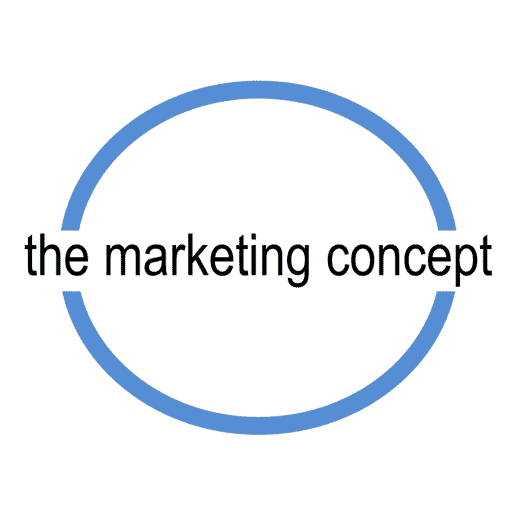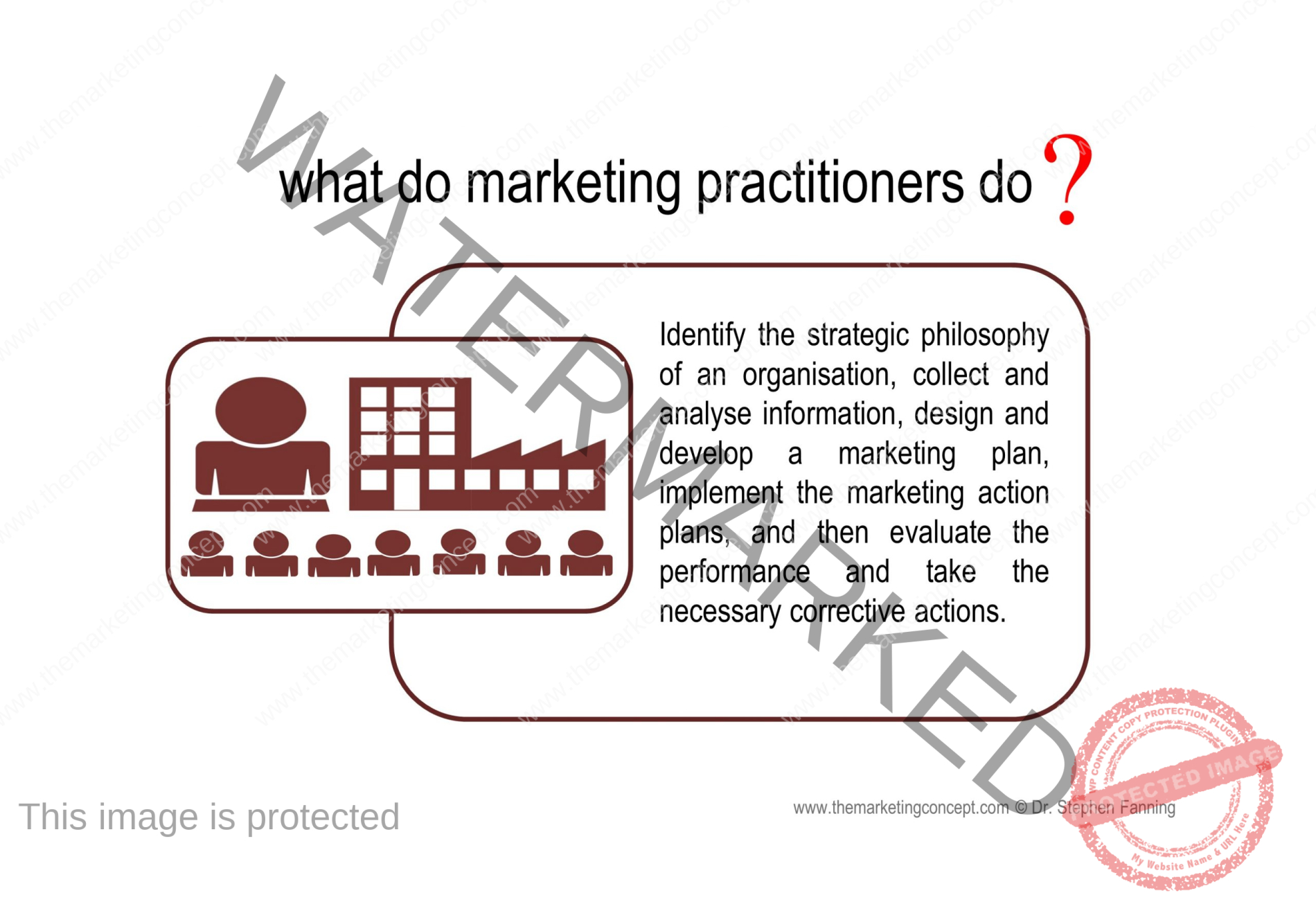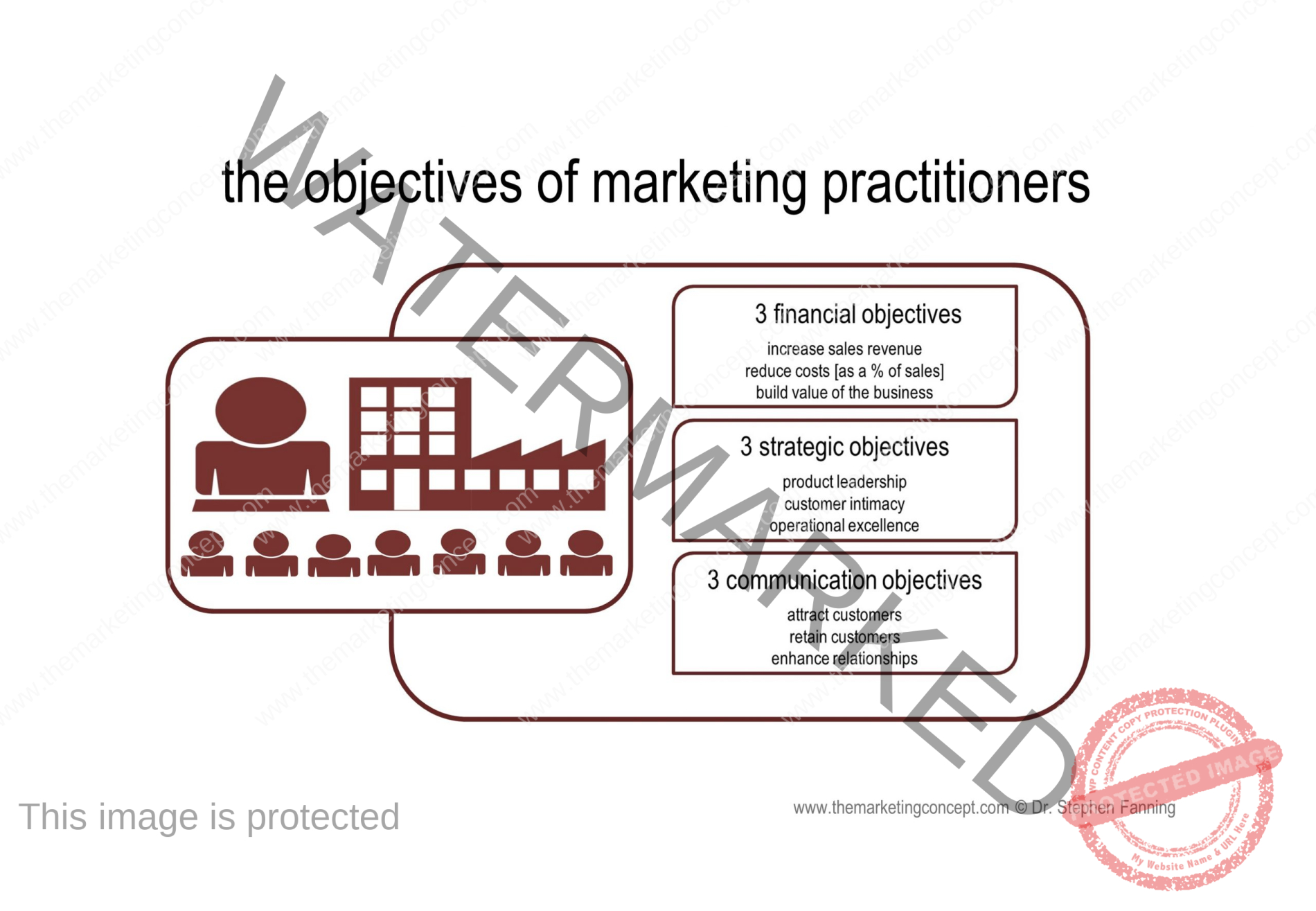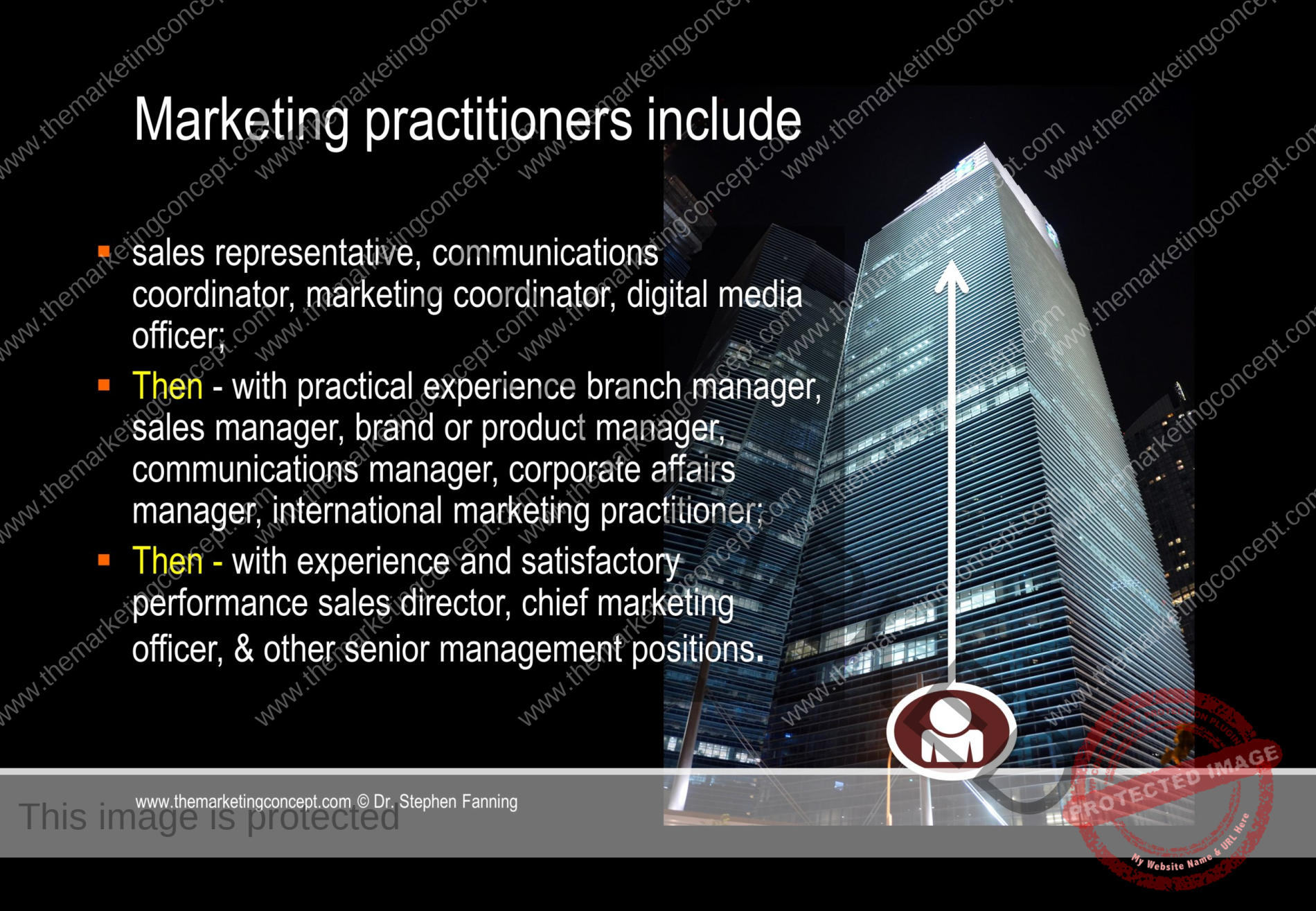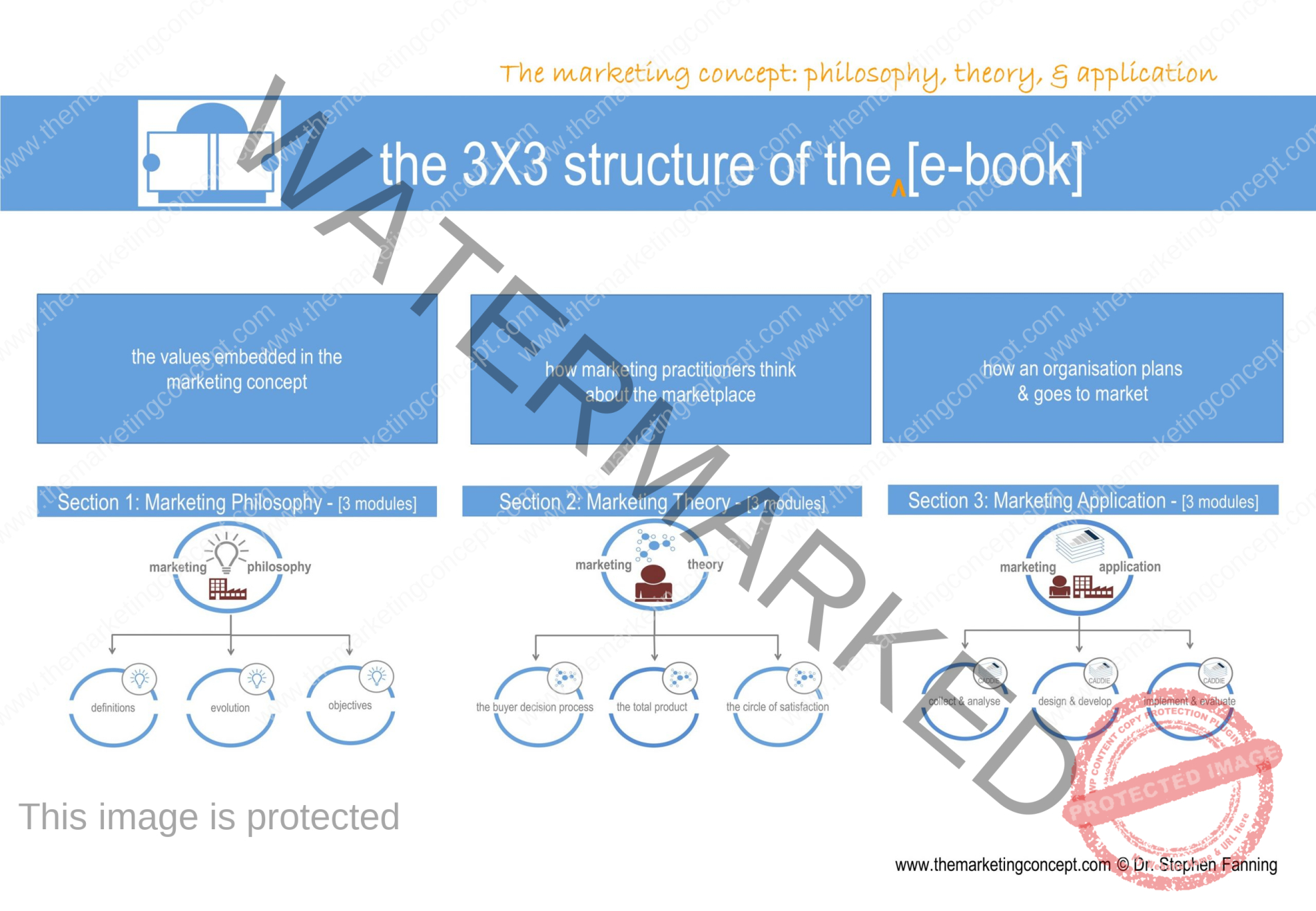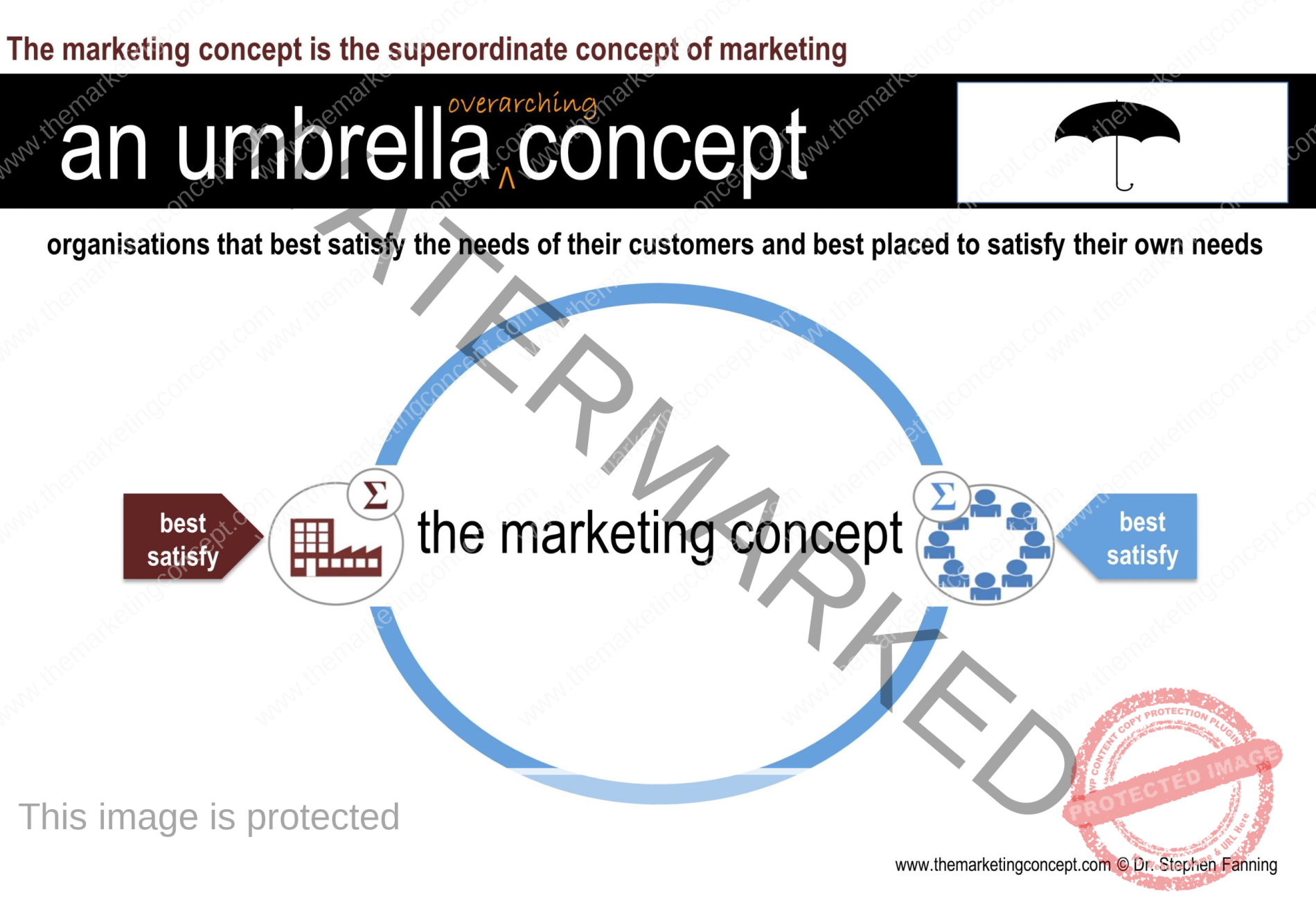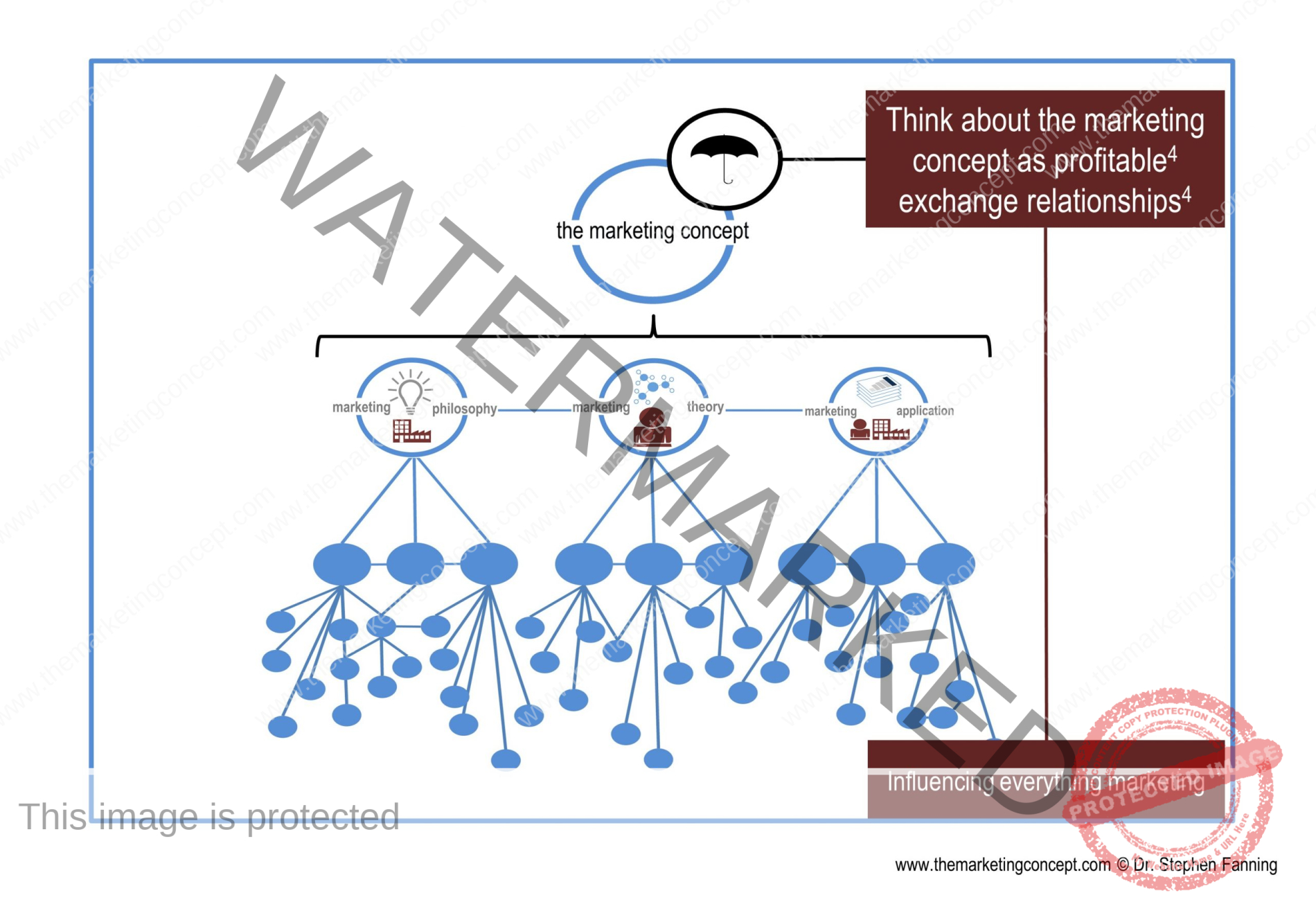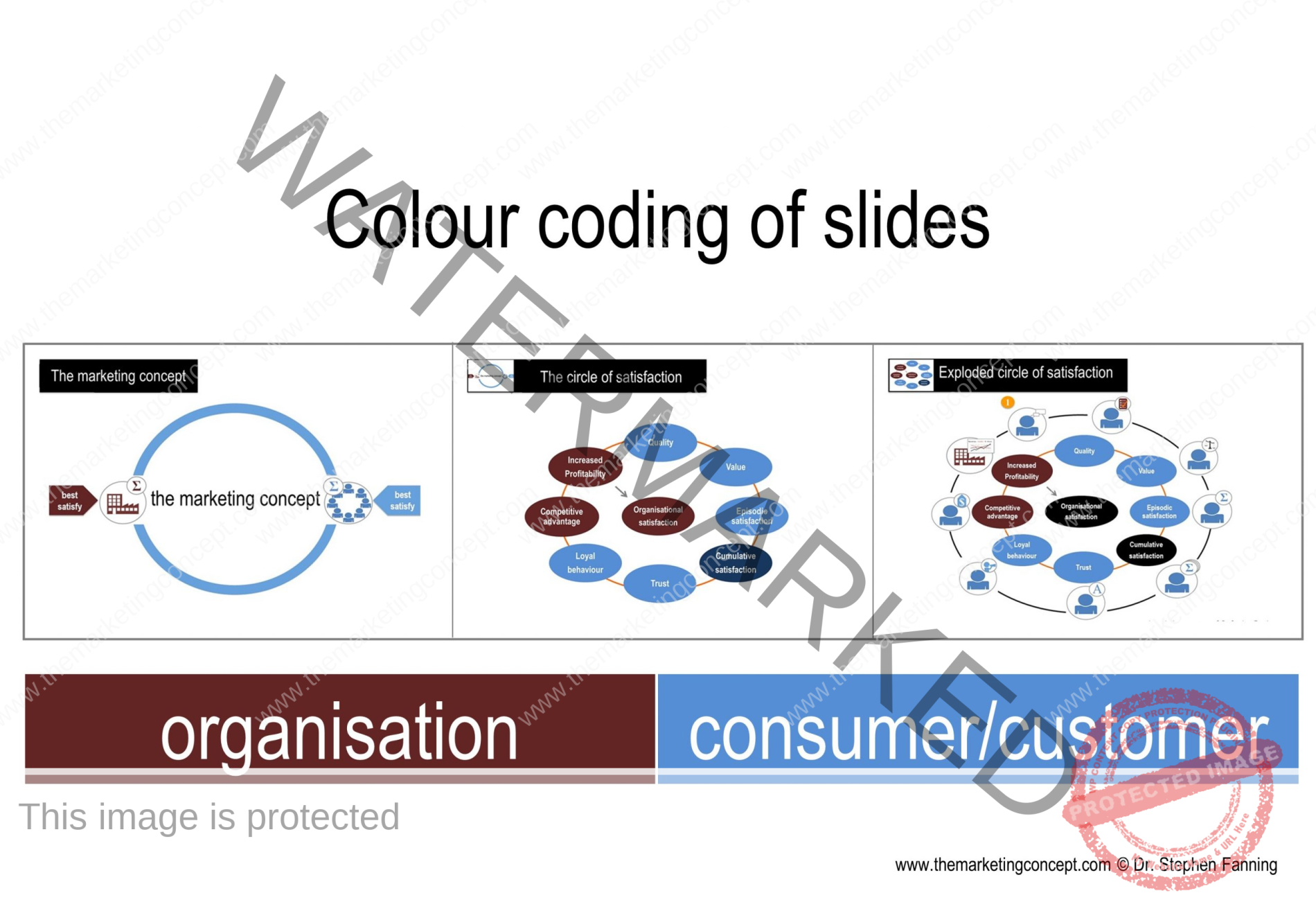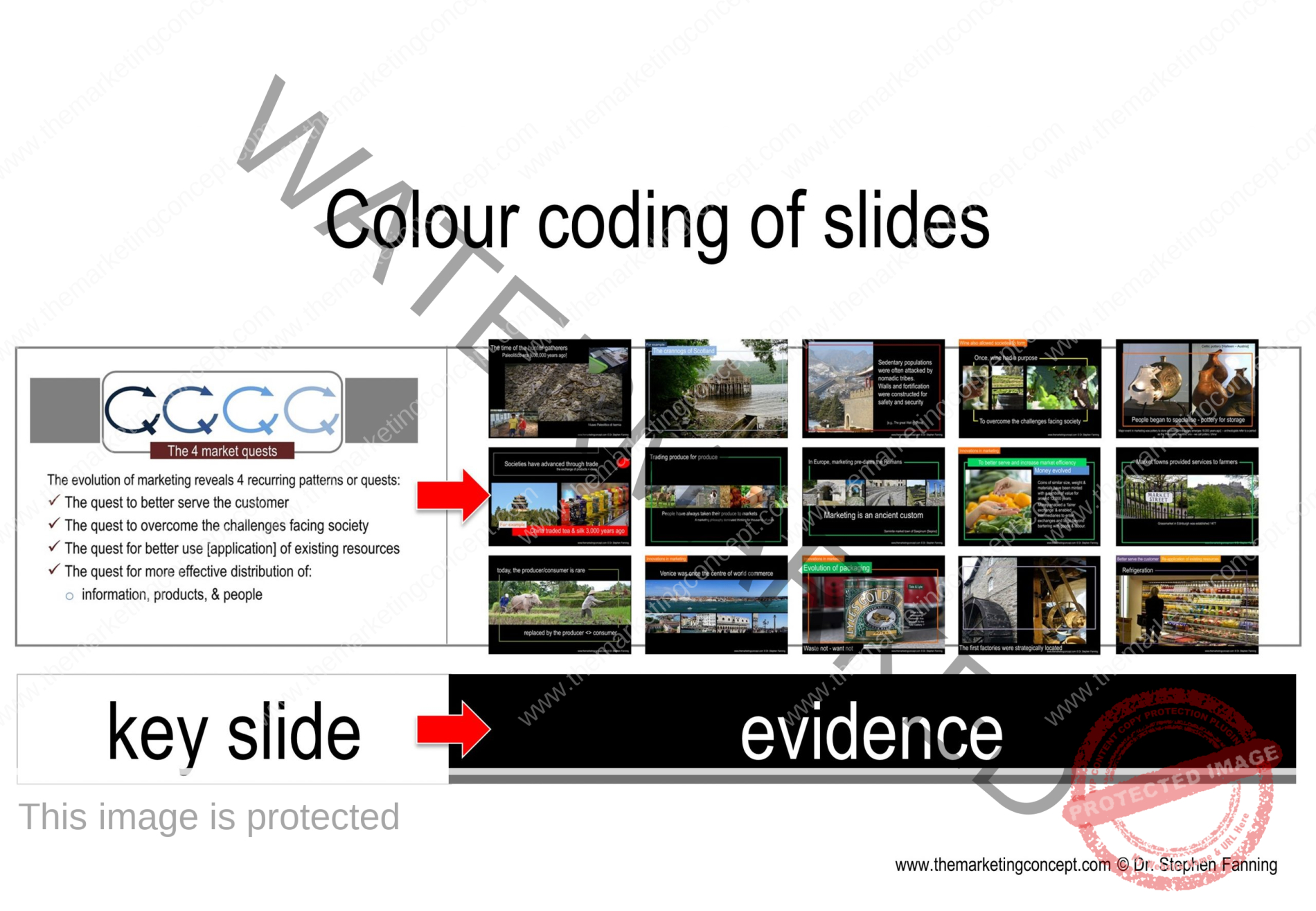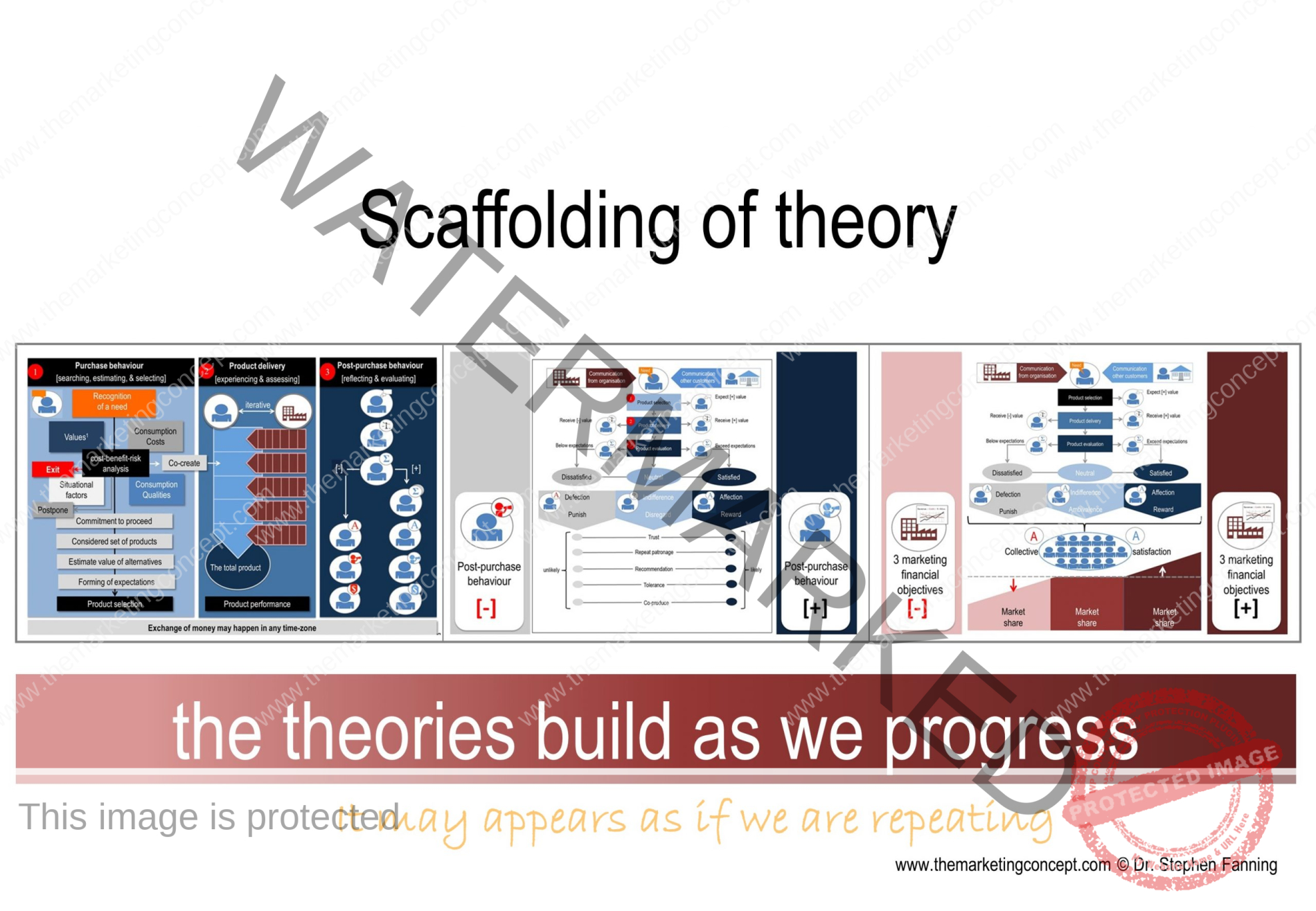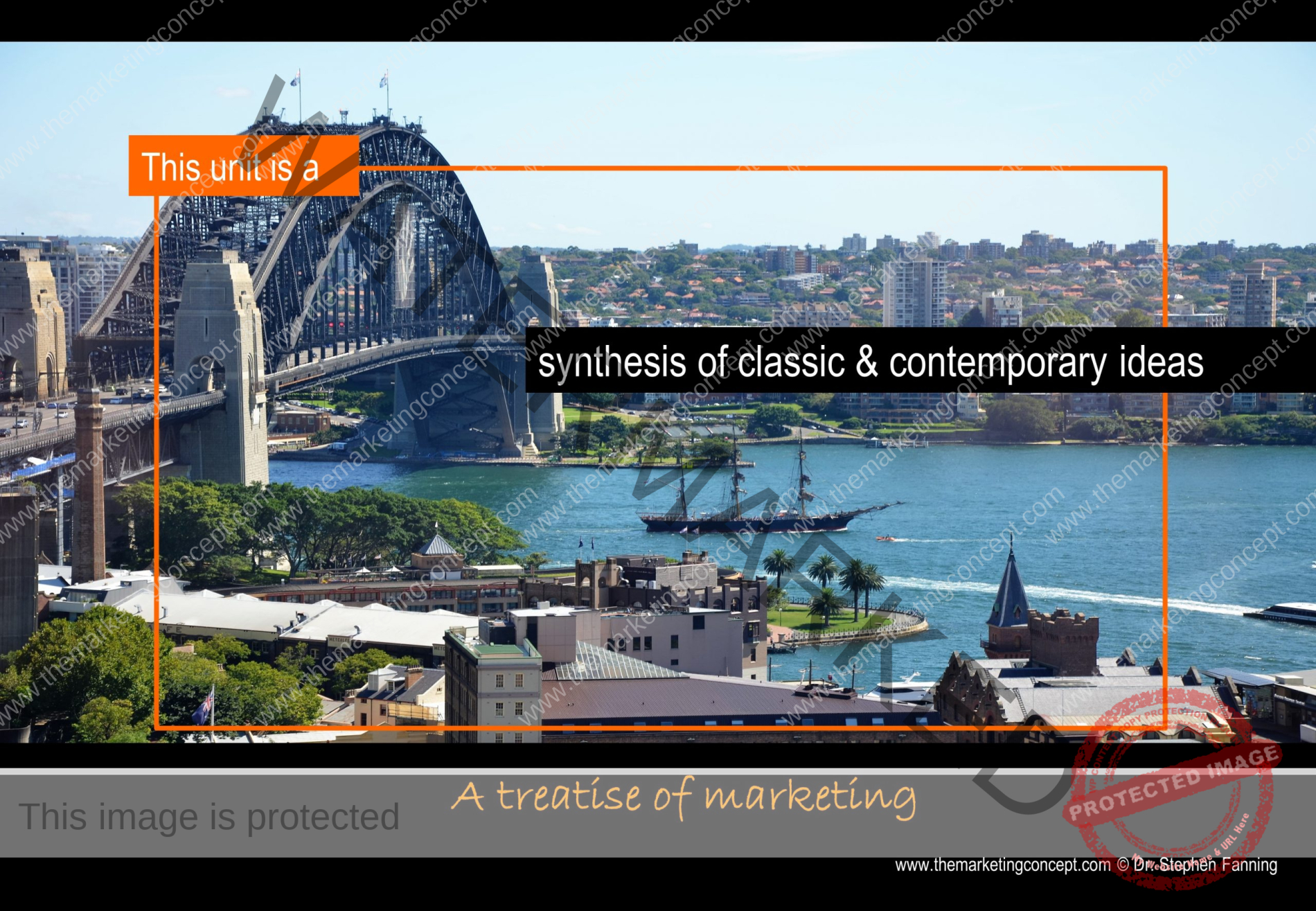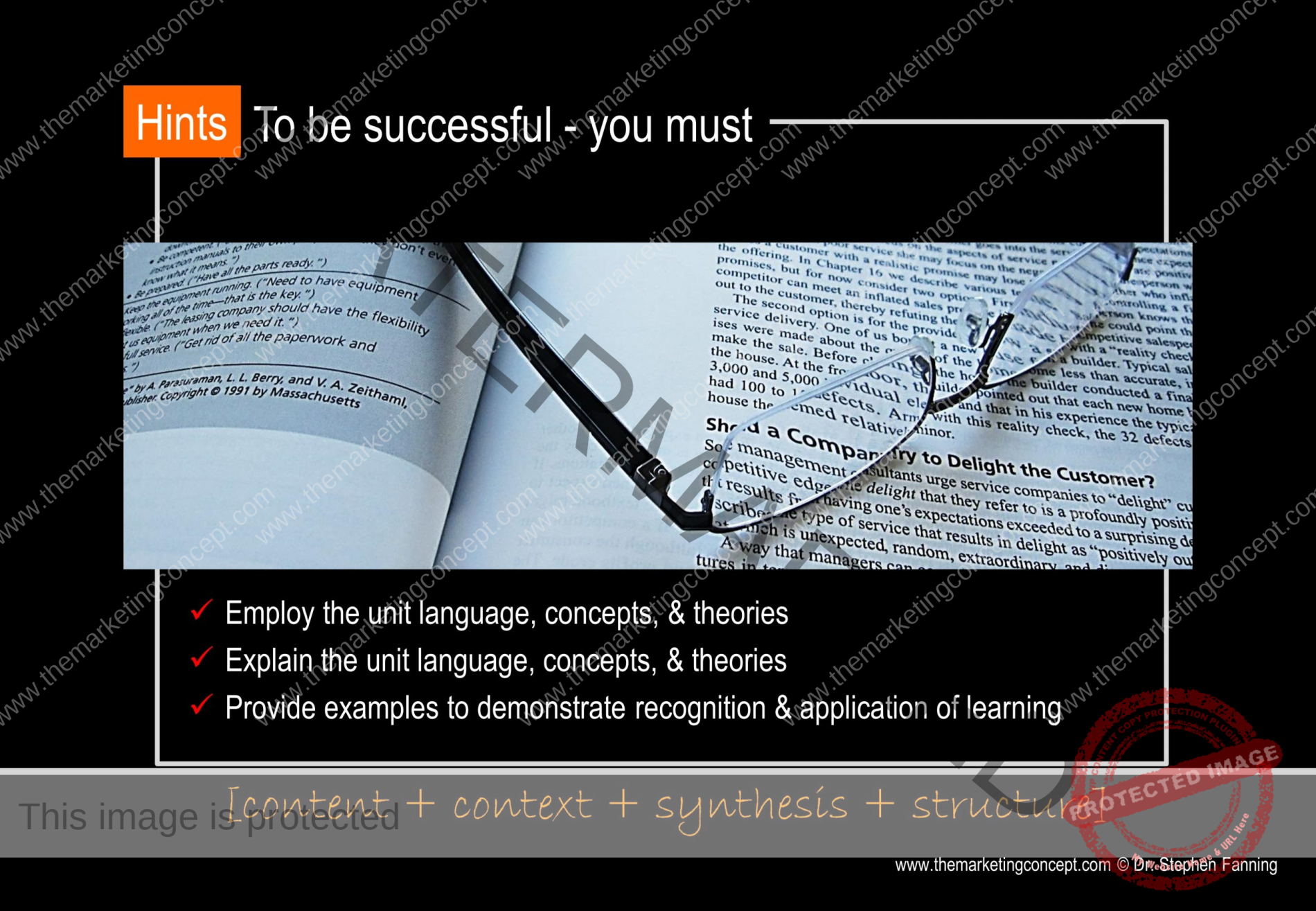
an absolutely free marketing reference for university students, lecturers, & business people
Welcome to the world of marketing. Marketing is often said to be a blend of ‘science and art’ and as you progress you will discover the concepts, theories, constructs, and language of marketing, however, you will also discover that marketing is the business of business and without marketing there is no business.
The marketing concept
The marketing concept is built on a simple premise that organisations that best satisfy the needs of their customers and best placed to satisfy their own needs.
To be best satisfying, organisations must understand the dreams and demands of their customers; design and develop products that are distinct, discernible, and desirable; deliver on promises, act in a dignified manner and provide long-term dividends to customers, the organisation, channel partners, and society.
My task is to discover best satisfying products, talk with organisations and then to marry this information with academic concepts, theories, and constructs.
Please join me on this journey.

Marketing is old & new
Marketing is an ancient custom, for around 12,000 years buyers and sellers have gone to markets to satisfy their needs [and often their wants].
Today, many of our day to day conversations [whether face-to-face and/or online] are about our experiences as consumers. However, unlike our day to day conversations, discussing marketing as a business discipline requires an understanding of the concepts, theories, and constructs what some refer to as – the language of marketing.
This knowledge will unfold as we progress.

Each organisation is somewhat unique
The marketing concept is one of 3 acknowledged business concepts and is philosophically different to the other business concepts as it is directed towards best satisfying both customer and organisational needs. a
When an organisation has adopted the marketing concept, they consider their specific situational factors and then craft a marketing philosophy – a set of principles, attitudes and behaviours that provide guidance as to how an organisation goes to market a. As every organisation faces situational factors that are somewhat unique – then every marketing philosophy is somewhat unique.
A marketing philosophy is important as with time and with consistent internal communication a marketing culture of best satisfying and profitable4 exchange relationships4 is nurtured.
Although somewhat unique, each organisation will share characteristics with similar organisations. To identify similarities and differences the marketing discipline is organised around a series of marketing genres – a series of specialisations.
My task is to discover and present examples across a wide range of marketing genres as this will demonstrate how situational factors influence the strategic and tactical decision-making of marketing practitioners.
Debunking the marketing myths
If you think marketing, attention grabbing advertising alive with buzzwords, a feel-good catchphrase, a snazzy logo, a flashy web-site, and a good ‘spin’ when things go bad – then sorry – but you are wrong.
If you think marketing is about false promises and selling ‘things’ to people that they don’t need or want – then sorry – but, once again, you are wrong – very wrong.
Sure – effective communication, sales revenue, and profits are crucial, however, the marketing concept goes beyond short-term financial profits. The marketing concept presents a more holistic long-term view of profits and recognises that profitable4 exchange relationships4 are needed to achieve a sustainable competitive advantage.
The concept of profitable4 exchange relationships4 recognises that exchanges must be profitable4 for customers, organisations, channel partners, and society and relationships4 must be synergistic, symbiotic, strategic, and sustainable – some argue that if it is not profitable for all parties then it is not really marketing.
Although somewhat unique, each organisation will share characteristics with similar organisations. To identify similarities and differences the marketing discipline is organised around a series of marketing genres – a series of specialisations.
My task is to discover and present examples across a wide range of marketing genres as this will demonstrate how situational factors influence the strategic and tactical decision-making of marketing practitioners.

The good news
you may think you know very little about marketing.
however, that you probably know more about marketing than you think. After all – as a consumer you have been involved in marketing your entire life. It is likely that you have purchased thousands of products

1,000s of buying decisions
It is likely that you have purchased thousands of products.
You will have visited online and retail shops, restaurants, cafes, you will have received the services of dentists, doctors, and mechanics. Most will have experienced events such as cinema, concerts, and sports. Many will have purchased a car, an overseas holiday, and some a home. It is also likely that you have shared your consumption experiences with family and friends and observed and learned from the consumption experiences of others.

Therefore, as a consumer you are an experienced marketer
you know about quality and value, you know the steps to buy, you know that often paying more may be better value, you know when you are satisfied or dissatisfied, and you know when an organisation has treated you with respect or contempt.
Furthermore, when you share your consumption experiences – you influence the attitudes of other consumers.

As a connected consumer
you have hundreds of shopping malls in your hands
you have shared your consumption experiences with family & friends & observed & learned from the consumption experiences of society.
you have influenced consumer attitudes & learned what products to approach and what to avoid.
now it is time to put all those experiences to work.
the best news is that you can download an absolutely free copy of the e-book
